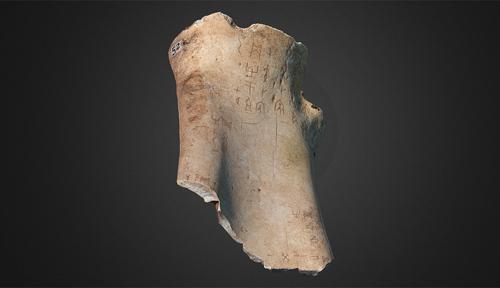Clik here to view.

Cambridge University Library, which is celebrating its 600th anniversary this year, holds 614 Chinese inscribed oracle bones in its collection. They are the oldest extant documents written in the Chinese language, dating from 1339-1112 BCE. Inscribed on ox shoulder blades and the flat under-part of turtle shells, they record questions to which answers were sought by divination at the court of the royal house of Shang, which ruled north central China at that time.
The inscriptions on the bones provide much insight into many aspects of early Chinese society, such as warfare, agriculture, hunting, medical problems, meteorology and astronomy.
Among the latter is a record of a lunar eclipse dated to 1192 BCE, one of the earliest such accounts in any civilisation.
Charles Aylmer, Head of the Chinese Department at Cambridge University Library, said: “Some of the bones have already been included in the Cambridge Digital Library, but now new technology provides readers around the world an even closer look at these precious artefacts.
“In what is believed to be a world first, one of the bones (which features in the 600th anniversary exhibition Lines of Thought) has been digitised in 3D thanks to the work of archaeologist Professor Dominic Powlesland, one of the leading pioneers in this area.”
The high-resolution image of the bone, which measures about 9x14 cm, knits together 1.3 million aspects to allow a seamless view of its entire surface.
The image brings into sharp focus not only the finely incised questions on the obverse of the bone, but also the divination pits engraved on the reverse and the scorch marks caused by the application of heat to create the cracks (which were interpreted as the answers from the spirit world). These can be seen more clearly than by looking at the actual object itself, and without the risk of damage by handling the original bone.
In collaboration with the Media Studio of Addenbrooke's Hospital (part of the Cambridge Biomedical Campus), the scanned data were used to make what is believed to be the first 3D print of an oracle bone.
The print was made with a printer whose main function in the hospital is to assist in planning maxillofacial and orthopaedic surgery. The print comprises 350 superimposed layers of a fine powdered plaster compound hardened with cyanoacrylate (superglue).
3D prints such as this enable students and researchers to obtain a ‘hands-on’ impression otherwise impossible for conservation reasons. It is hoped to create images of more bones from the Library's collection as funding permits.
Aylmer added: "The oracle bones are three-dimensional objects, and high-resolution 3D imagery reveals features which not only all previous methods of reproduction (such as drawings, rubbings and photographs) have been unable to do, but which are not even apparent from careful examination of the actual items themselves.
“In particular, the reverse sides of the bones, which are crucial to understanding the process of divination but have hitherto been neglected because of the difficulty of representing them adequately, can now be studied in detail thanks to this new technique.
“To hold a 3D print of an oracle bone is a very special experience, as it provides the same sensory impression as that obtained by the people who created them over three thousand years ago, but without the risk of harm to the priceless originals."
The earliest-known example of Chinese writing – written more than 3,000 years ago on the bones of an ox – has become the world’s first Chinese oracle bone to be scanned and printed in 3D.
Image may be NSFW.
Clik here to view.
The text in this work is licensed under a Creative Commons Attribution 4.0 International License. For image use please see separate credits above.